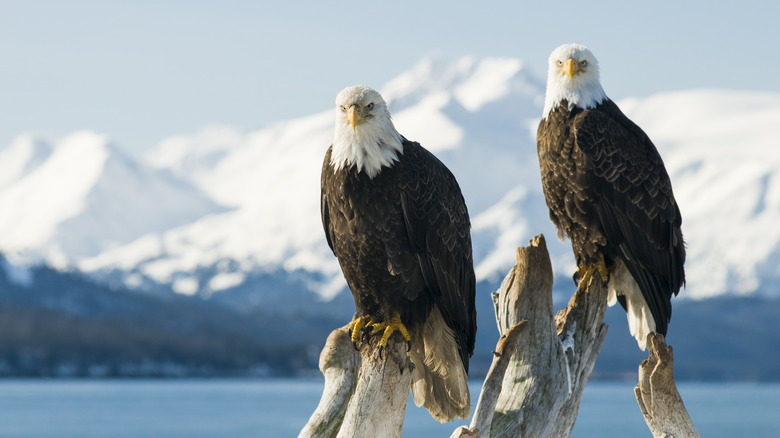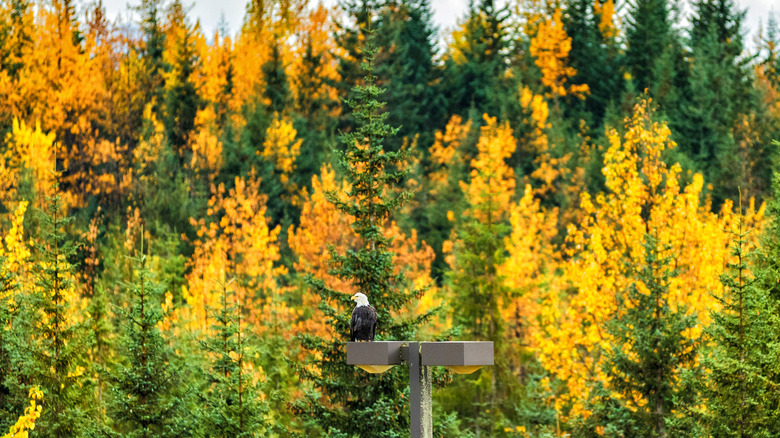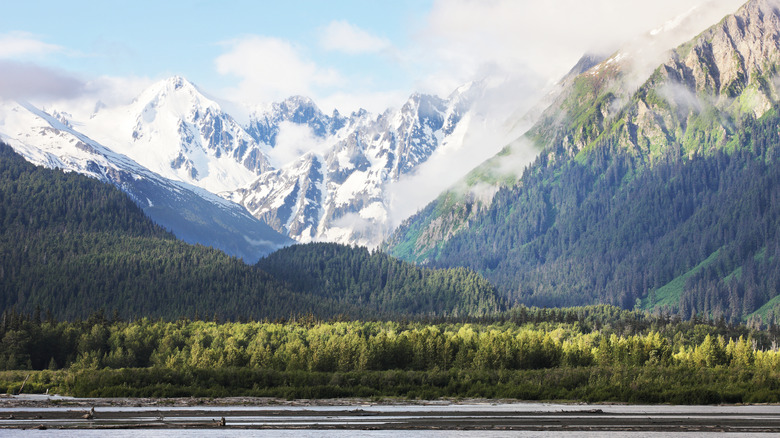The World's Largest Concentration Of American Bald Eagles Is A Breathtaking Alaskan Paradise
We may receive a commission on purchases made from links.
Every autumn, a must-see wildlife spectacle takes place in Alaska's northern panhandle. Up to 4,000 bald eagles converge on the 48,000-acre Chilkat Bald Eagle Preserve — the largest gathering of these incredible birds on the planet. A protected area since 1982, these powerful raptors flock to the region to feast on spawning salmon, creating a natural show that draws visitors from around the world.
A must-see destination for first-time Alaska visitors, the Chilkat Bald Eagle Preserve sits within the territory of the Tlingit people, who have lived in harmony with this ecosystem for over 2,000 years. Beyond its deep natural and cultural significance, the area also offers a rare opportunity for wildlife enthusiasts to enjoy a front-row seat to Alaska's nature in its rawest form.
Best of all, access to this wildlife spectacle is surprisingly convenient. Like a scene plucked directly from a NatGeo documentary, bald eagles perch on frost-covered trees before swooping down to hunt for salmon alongside another one of Alaska's most famous residents: grizzly bears. From directly catching fish in the water to scavenging for leftovers and stealing catches from fellow eagles, these birds showcase the full extent of their abilities for spectators to see and enjoy firsthand. This ultimately means that photographers, conservationists, and nature lovers alike can all enjoy an unobstructed view of these incredible predators (and their fascinating behavior) in action, all from within their natural habitat.
Visiting Alaska's Chilkat Bald Eagle Preserve
Once inside the preserve, the main viewing area sits where the Tsirku and Klehini rivers join the Chilkat, creating vast sand-and-gravel flats. This space — located between Mile 18 and Mile 24 along the Haines Highway — generally remains ice-free well into winter thanks to underground springs. This unique feature allows salmon to spawn a lot later than in other regions, which provides a critical food source for American bald eagles when they need it most.
Beyond that, the Chilkat Valley also supports all five North American Pacific salmon species, meaning that both bears and eagles have plenty to feast on throughout different seasons. Even better, the valley also forms a crucial wildlife corridor between Alaska's interior and coast, making it a safe haven for a variety of local species that include moose, wolves, mountain goats, and other migratory birds. Not only that, but Alaska's also one of the safest destinations in the country to see bears in the wild — which means you'll have plenty of opportunities to see more animals than you'd initially imagined.
Finally, although the fall gathering tends to draw the most attention, the truth is that roughly 200 to 400 eagles live in the preserve year-round. This means you don't necessarily have to visit during peak season, especially if you prefer fewer crowds. As a pro tip, the preserve's Council Grounds pullout (located at Mile 19) boasts excellent viewing opportunities as well as access to useful facilities that include informational displays, a boardwalk, viewing scopes, and a 2-mile riverside trail. Just make sure you've pulled completely off the road when stopping and that you always stay within designated areas to avoid disturbing the birds (or getting yourself in the way of other wildlife).
Catching a glimpse of the bald eagles while rafting
If you're not interested in the idea of trying to DIY your Alaska vacation, the easiest way to experience the Chilkat Bald Eagle Preserve up close is through a guided rafting tour, like Viator's Chilkat Bald Eagle Preserve Rafting adventure, which departs from Skagway. This tour takes you directly into the heart of eagle territory along the Chilkat River, where birds typically reside. Logistics-wise, the adventure kicks off with a high-speed catamaran transfer from Skagway to Haines, followed by a scenic drive to the preserve.
Unlike most other Alaskan adventures, Viator's trip features no rapids — which makes it accessible for photographers and wildlife enthusiasts of all skill levels. Instead, your guide will handle all navigation while sharing insights about the region's ecosystem and cultural significance. Better yet, most previous travelers have consistently praised the guides for their expertise about local eagle behaviors, as well as their ability to spot wildlife that untrained eyes might miss.
For the best wildlife viewing opportunities, try to book the earliest departure to make the most of the calmest water conditions and most active wildlife. Beyond that, travelers also recommend complementing the experience with a visit to the American Bald Eagle Foundation in Haines (either before or after your tour) to learn even more about the birds. As a final tip, make sure you pack extra layers regardless of weather forecasts, bring quality binoculars, and wear polarized sunglasses to reduce glare off the water. Although the tour includes a riverside picnic lunch, bringing additional snacks and water is advised for the approximately 6.5-hour round-trip adventure.


